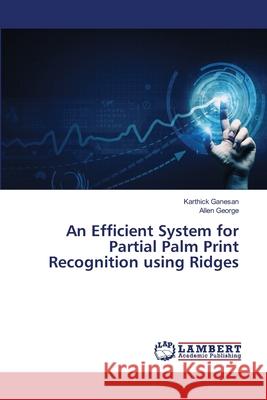An Efficient System for Partial Palm Print Recognition using Ridges » książka
An Efficient System for Partial Palm Print Recognition using Ridges
ISBN-13: 9786139842933 / Angielski / Miękka / 2018 / 52 str.
An Efficient System for Partial Palm Print Recognition using Ridges
ISBN-13: 9786139842933 / Angielski / Miękka / 2018 / 52 str.
(netto: 153,29 VAT: 5%)
Najniższa cena z 30 dni: 160,95
ok. 10-14 dni roboczych
Bez gwarancji dostawy przed świętami
Darmowa dostawa!
Palm print recognition has been investigated over the past ten years. During this period different problems have been addressed. The flexion creases are called as principal lines and the secondary creases are called wrinkles. The ridges present in the palms are unique and persistent. The palmar region consists of more minutiae than the fingerprints, hence it is considered as more distinctive than fingerprints. For these systems, high resolution such as 500 PPI is the standard resolution for capturing in systems that use ridge features for identification. Existing palm print matching systems were based on the low resolution (100ppi) images. In addition to high-resolution palmprint images, partial-to-full palmprint matching must also be supported. Such partial palm prints recovered from the palm impressions at crime scenes are called latent palm prints and for testing purposes, they are generated from live-scan high-resolution full palm prints by cropping them into different regions/ segments. The latter is also called pseudo latent partial palm prints, or synthetic latent partial palm prints, depending on whether noise/degradations are added or not, respectively.











